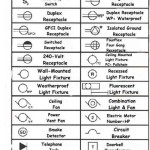How to Make Liquid Fertilizer for Houseplants: At-Home Recipes
Nurturing houseplants often involves more than just consistent watering and adequate sunlight. Providing the necessary nutrients is crucial for healthy growth, vibrant foliage, and even flowering. While commercially available fertilizers are readily accessible, creating liquid fertilizer at home offers a cost-effective and environmentally conscious alternative. Utilizing common household items and food scraps, individuals can formulate nutrient-rich solutions tailored to the specific needs of their indoor plants.
The process of creating homemade liquid fertilizer involves extracting beneficial elements from organic materials and diluting them to a safe concentration for plant absorption. This method allows individuals to control the composition of the fertilizer, avoiding potentially harmful chemicals and tailoring the nutrient profile to suit the specific plant species. While homemade fertilizers may not provide a perfectly balanced nutrient ratio like commercial options, they offer a sustainable and effective way to supplement plant nutrition.
Before embarking on fertilizer production, it is essential to understand the basic nutrient requirements of houseplants. Plants require macronutrients like nitrogen (N), phosphorus (P), and potassium (K), as well as micronutrients such as iron, manganese, and zinc. Nitrogen promotes leafy growth, phosphorus supports root development and flowering, and potassium contributes to overall plant health and disease resistance. The specific requirements vary depending on the plant species and its stage of growth. Researching the needs of individual plants is paramount to formulating an appropriate fertilizer blend.
Understanding the Macronutrients
Nitrogen is a crucial element for plant growth, particularly for the development of lush, green foliage. It is a component of chlorophyll, the pigment that enables plants to convert sunlight into energy through photosynthesis. Nitrogen deficiencies can manifest as yellowing leaves, stunted growth, and reduced overall vigor. Sources of nitrogen for homemade liquid fertilizer include grass clippings, coffee grounds, and compost tea. However, it is crucial to use these sources sparingly and with careful dilution, as excessive nitrogen can burn plant roots and promote excessive leafy growth at the expense of flowering or fruiting.
Phosphorus plays a vital role in root development, flower formation, and fruit production. It is essential for transferring energy within the plant and promoting healthy cell division. Phosphorus deficiencies can result in stunted root growth, delayed flowering, and small, discolored leaves. Bone meal and banana peels are good sources of phosphorus for homemade liquid fertilizers. Banana peels, in particular, are rich in potassium as well, offering a dual benefit. The peels can be composted, added directly to the soil, or steeped in water to create a nutrient-rich tea.
Potassium contributes to the overall health and vigor of plants, enhancing their disease resistance, water regulation, and tolerance to stress. It is also involved in the activation of enzymes and the transport of sugars within the plant. Potassium deficiencies can lead to yellowing leaf edges, weak stems, and reduced fruit or flower production. Wood ash and banana peels are excellent sources of potassium for homemade liquid fertilizers. Wood ash, however, should be used with caution as it can significantly raise the soil pH, which may be detrimental to acid-loving plants.
Recipes for Homemade Liquid Fertilizer
Several recipes utilize readily available household ingredients to provide essential nutrients for houseplants. These recipes typically involve soaking or brewing organic materials in water to extract the beneficial elements. The resulting liquid is then diluted to a suitable concentration before application.
Banana Peel Fertilizer
Banana peels are a particularly rich source of potassium and phosphorus, making them an ideal ingredient for homemade fertilizer. To create banana peel fertilizer, collect banana peels and chop them into smaller pieces. Place the chopped peels in a jar or container and cover them with water. Allow the mixture to steep for several days, ideally one to two weeks, stirring occasionally. The water will become discolored as nutrients leach from the peels. Once the steeping process is complete, strain the liquid to remove the solid pieces. Dilute the resulting liquid with water at a ratio of 1:2 or 1:3, depending on the concentration. This diluted solution can be used to water houseplants, providing a boost of potassium and phosphorus. The soaked banana peels can be added to compost or directly to the soil.
Eggshell Fertilizer
Eggshells are primarily composed of calcium carbonate, which is beneficial for plant health, particularly for strengthening cell walls and improving nutrient uptake. While calcium is not considered a macronutrient, it plays an important role in overall plant development. To create eggshell fertilizer, thoroughly rinse and dry eggshells. Grind the dried eggshells into a fine powder using a blender or food processor. The resulting powder can be added directly to the soil around houseplants or used to create a liquid fertilizer. To make liquid fertilizer, steep the eggshell powder in hot water for several hours or overnight. Strain the liquid and dilute it with water at a ratio of 1:4 or 1:5 before using it to water plants. The eggshells can also lower the acidity of the soil slightly over time.
Coffee Grounds Fertilizer
Coffee grounds are a source of nitrogen, phosphorus, and potassium, as well as trace minerals. They also improve soil drainage and aeration. Used coffee grounds are preferred as the initial acidity is lessened through brewing. To use coffee grounds as fertilizer, sprinkle a thin layer of coffee grounds around the base of houseplants, avoiding direct contact with the stems. Gently work the grounds into the soil. Alternatively, steep used coffee grounds in water for several hours or overnight to create a liquid fertilizer. Strain the liquid and dilute it with water at a ratio of 1:1 or 1:2 before using it to water plants. Coffee grounds are particularly beneficial for acid-loving plants such as azaleas, rhododendrons, and blueberries.
Compost Tea
Compost tea is a liquid extract of compost, containing a wide range of nutrients, beneficial microbes, and organic matter. It is an excellent way to provide a balanced and gentle fertilizer for houseplants. To make compost tea, place a shovelful of mature compost in a mesh bag or a porous container such as a burlap sack. Submerge the bag in a bucket of water and allow it to steep for several days, stirring occasionally. The water will become discolored as nutrients and microbes leach from the compost. After several days, remove the bag and strain the liquid. Dilute the resulting tea with water at a ratio of 1:5 or 1:10, depending on the strength of the compost. Use the diluted compost tea to water houseplants, providing a boost of nutrients and beneficial microbes that improve soil health and plant vigor.
Important Considerations and Precautions
While homemade liquid fertilizers can be beneficial for houseplants, it is essential to exercise caution and follow certain guidelines to avoid damaging plants. Over-fertilizing can be detrimental, leading to nutrient burn, salt buildup in the soil, and even plant death. It is always better to err on the side of under-fertilizing, as plants can typically tolerate nutrient deficiencies better than excesses.
Dilution is a critical step in preparing homemade liquid fertilizers. The concentration of nutrients in the undiluted liquid can be too high for plants, leading to root damage and leaf burn. Always dilute the fertilizer with water before applying it to houseplants. The appropriate dilution ratio depends on the specific recipe and the plant species. Start with a lower concentration and observe how the plants respond before increasing the concentration.
Monitor plants closely for signs of nutrient deficiencies or excesses. Yellowing leaves, stunted growth, weak stems, and poor flowering can indicate nutrient deficiencies. Leaf burn, salt crusts on the soil surface, and wilting can indicate over-fertilization. Adjust the fertilizer regimen based on the observed symptoms. If signs of over-fertilization are present, flush the soil with water to remove excess salts and nutrients.
Consider the specific needs of different plant species. Some plants are heavy feeders and require more frequent fertilization, while others are light feeders and benefit from infrequent fertilization. Research the specific nutrient requirements of each plant species and adjust the fertilizer regimen accordingly. Acid-loving plants, such as azaleas and camellias, require acidic soil and may benefit from fertilizers with a lower pH. Alkaline-loving plants, such as lavender and rosemary, prefer soil with a higher pH.
Homemade liquid fertilizers should be stored in a cool, dark place to prevent spoilage and maintain their nutrient content. Use the fertilizer within a reasonable timeframe, as the nutrients can degrade over time. It is generally best to prepare fresh fertilizer as needed, rather than storing it for extended periods. Discard any fertilizer that develops a foul odor or shows signs of mold growth.
When using wood ash as fertilizer, exercise caution due to its high pH. Wood ash can significantly raise the soil pH, which may be detrimental to acid-loving plants. Use wood ash sparingly and test the soil pH regularly to ensure it remains within the appropriate range for the plant species. Avoid using wood ash from treated wood, as it may contain harmful chemicals.
Consider using a soil testing kit to assess the nutrient content of the soil before applying any fertilizer. This can help identify specific nutrient deficiencies and guide the formulation of a targeted fertilizer blend. Soil testing can also help prevent over-fertilization by providing information about the existing nutrient levels in the soil.
The information provided offers guidance on creating and using homemade liquid fertilizers for houseplants. It is not intended to be a substitute for professional advice. Consult with a qualified horticulturalist or plant specialist for specific recommendations tailored to the needs of individual plants.
:max_bytes(150000):strip_icc()/make-your-own-fertilizer-1388159-hero-025e07a9b96840568b5eb5050f4bab10.jpg?strip=all)
How To Make Your Own Fertilizer

8 Organic Liquid Fertilizers You Can Make Feathers In The Woods

Make A Simple Organic Fertilizer For Healthy Indoor Plants Garden Therapy

Home Made Miracle Grow Make Your Own Homemade Plant Food

9 Best Homemade Fertilizer For Houseplants Boost Growth Naturally

11 Diy Homemade Plant Fertilizers With Recipes Gardening

Top 10 Homemade Liquid Fertilizers Diy Plant Food That Will Transform Your Garden

Make A Simple Organic Fertilizer For Healthy Indoor Plants Garden Therapy

11 Diy Homemade Plant Fertilizers With Recipes Gardening

10 Best Homemade Plant Fertilizers A Cultivated Nest








